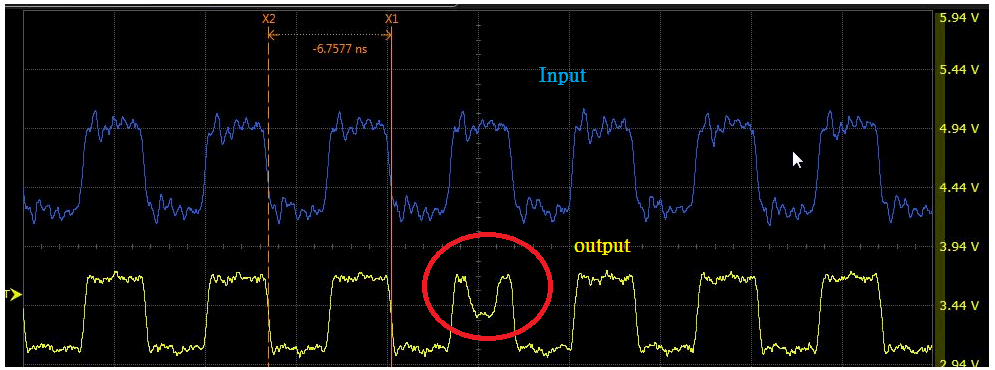We currently found a issue of SN65LVCP408 in our video matrix application.
We are feeding 7 sets of differential clock signal as the input signal of the SN65LVCP408.
The typical application is to pair the input and output by switching the different profiles. When switching the profile, we will change the status of PIN "SWT"
We found the output signal at port 7(only port 7) twists whenever we switch the profile from profile A and profile B.
Input port 7 is directed to output port 7 in both profile A and profile B.
In our application, if the output clock signal twists at port 7, output video will flash and come back. That's not something we want. We want a seamless switch.
We are not sure anything we miss in our circuit....
If possible, can anyone provide the reference design of this SN65LVCP408? There are not much info. on the website.



